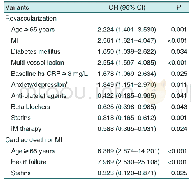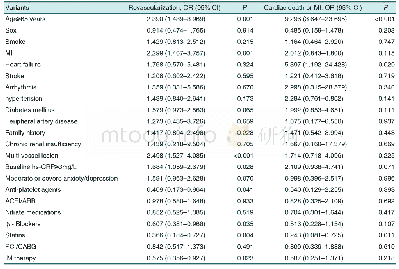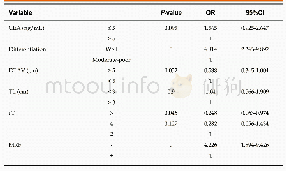《Table 2Univariate analysis of clinical factors predicting overall survival and progression free sur
 提示:宽带有限、当前游客访问压缩模式
提示:宽带有限、当前游客访问压缩模式
本系列图表出处文件名:随高清版一同展现
《Prognostic factors and survival after surgical resection of pancreatic neuroendocrine tumor with validation of established and modified staging systems》
Reported rates are Kaplan–Meier survival estimates at five years,and P values are from log-rank tests on all available follow-up.OS:overall survival;PFS:progression free survival.
The median follow-up,based on the Kaplan–Meier estimate of potential follow-up,was 72 months,with a maximum of 290months.The actuarial 1-,3-,5-and 10-year OS rates were 90.1%,83.9%,78.1%and 64.9%,respectively.Univariate analysis found increasing age,tumor size,and positive lymph nodes to be associated with significantly shorter OS(Table 2).The type of surgery was also a significant predictor of OS(P<0.01).The shortest survivalwas observed in patients undergoing debulking surgery,although post-hoc analysis did not find this to be significantly worse than in multi-visceral resection(P=0.188).However,both of these groups were found to have significantly worse outcomes than those undergoing either anatomic or enucleation surgery(P<0.01).
| 图表编号 | XD0020452200 严禁用于非法目的 |
|---|---|
| 绘制时间 | 2018.04.01 |
| 作者 | Nikolaos Benetatos、James Hodson、Ravi Marudanayagam、Robert P Sutcliffe、John R Isaac、John Ayuk、Tahir Shah、Keith J Roberts |
| 绘制单位 | The HPB Unit, Queen Elizabeth Hospital Birmingham, University Hospitals Birmingham NHS Foundation Trust、Institute of Translational Medicine, Queen Elizabeth Hospital Birmingham, University Hospitals Birmingham、The HPB Unit, Queen Elizabeth Hospital Birmin |
| 更多格式 | 高清、无水印(增值服务) |
查看“Table 2Univariate analysis of clinical factors predicting overall survival and progression free survival.”的人还看了
-

- Table 5.Analysis of Predictive Factors Using Multivariate Logistic Forward Conditional Stepwise Regression for Revascula
-

- Table 3 Predictive factors for good downstaging in univariate logistic regression analysis for all patients





